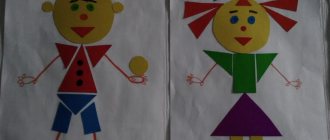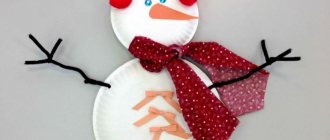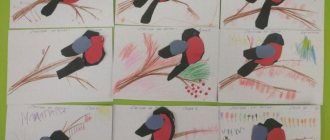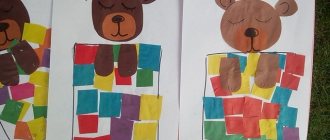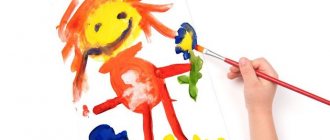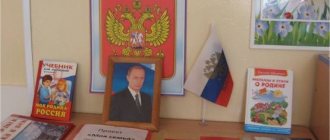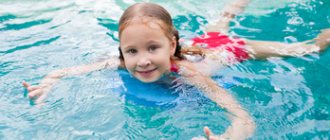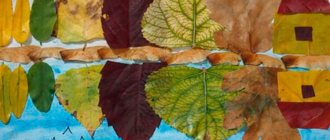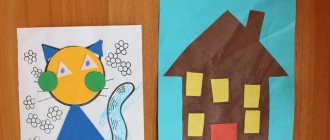Appliquéing a person is a very exciting and creative job. Its advantage is the variety of techniques used and varying complexity. Such work is suitable for very young children, preschoolers and elementary school students. Using the application, you can study geometric shapes, colors, parts of a person’s face, and his emotions.
Application of geometric shapes
The simplest version of a person’s appliqué is made from geometric shapes. This technique helps develop a child's imagination. The main elements used are square, triangle, circle, and rectangles.

For the application you will need:
- patterns of triangles, circles,
- cardboard;
- glue.

The complexity of the work depends on the number of parts and elements used. The simplest option is to invite the child to arrange the figures so that they form a body, head, arms and legs. A rectangle (boy figure) or a triangle (girl figure) is used as a body. Instead of a head there is a circle. The arms and legs are made from thin rectangles.
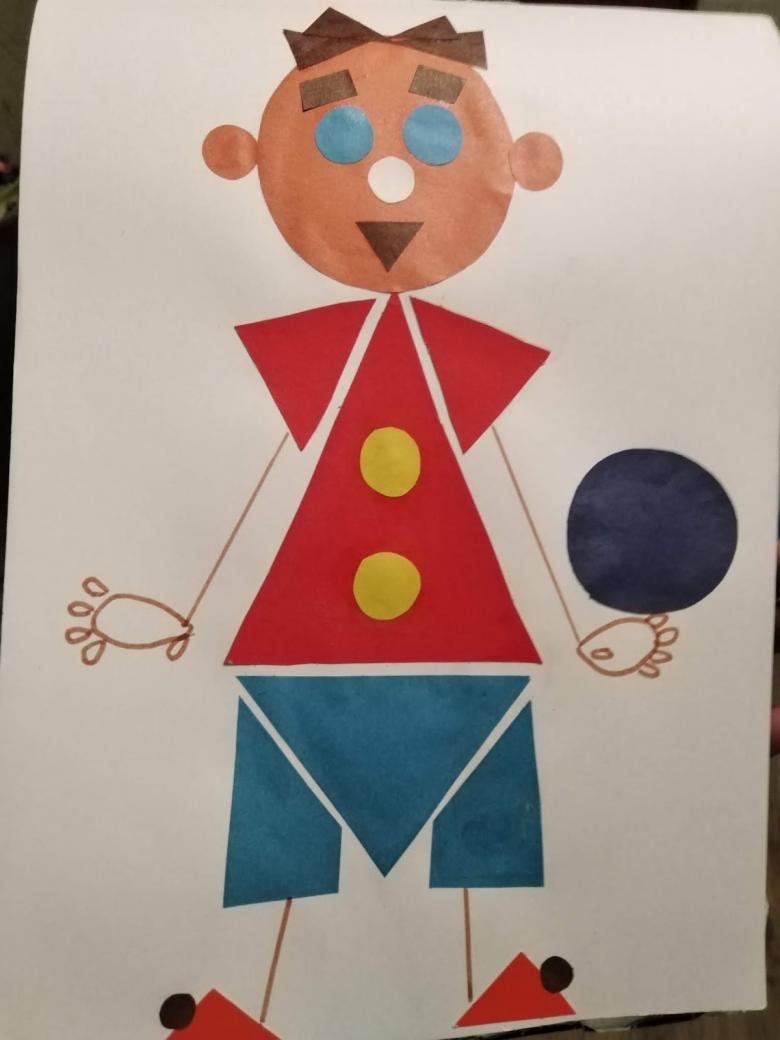
They complicate the work with various details - pigtails, a hat, highlighting the hands and feet. Small details indicate the eyes, mouth, nose.

Face: studying the senses and emotions
Appliquing a person's face from paper is not just an interesting creativity, but also an opportunity for a child to develop in different areas. To get acquainted with the senses and emotions, children are asked to do a simple job - stick eyes, mouth, nose, ears on a template.
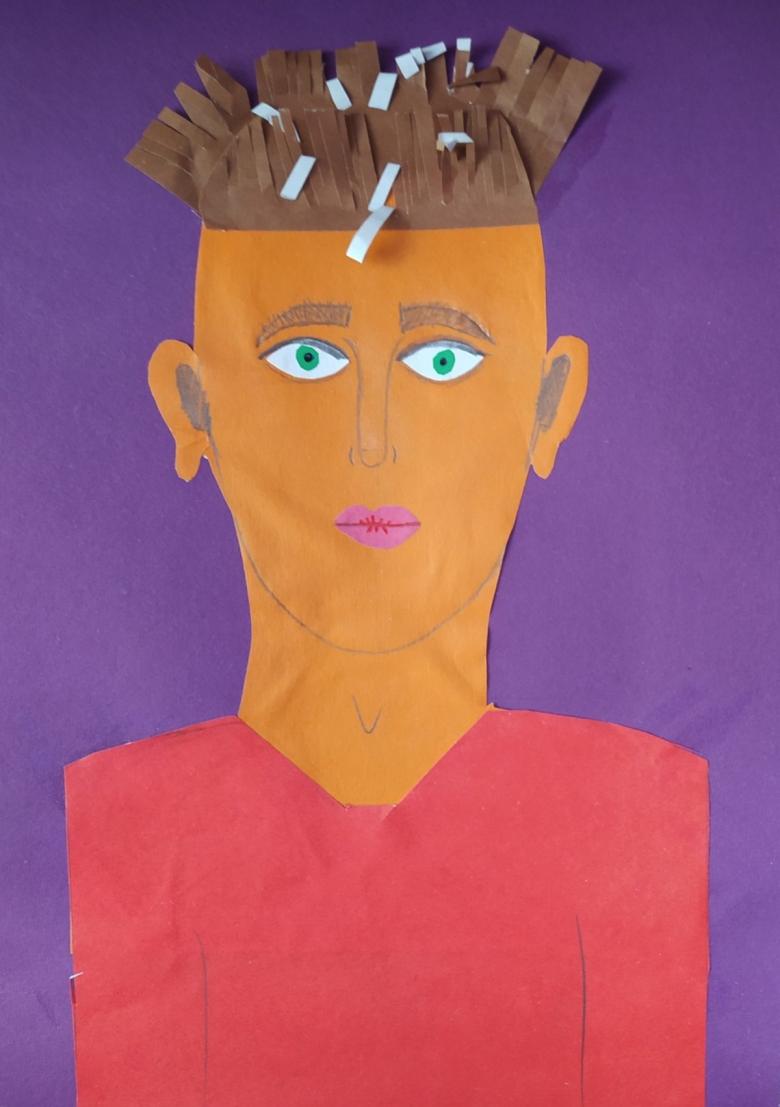
Classes can be divided into 2 types depending on age:
- familiarization with the location of organs;
- game of emotions.
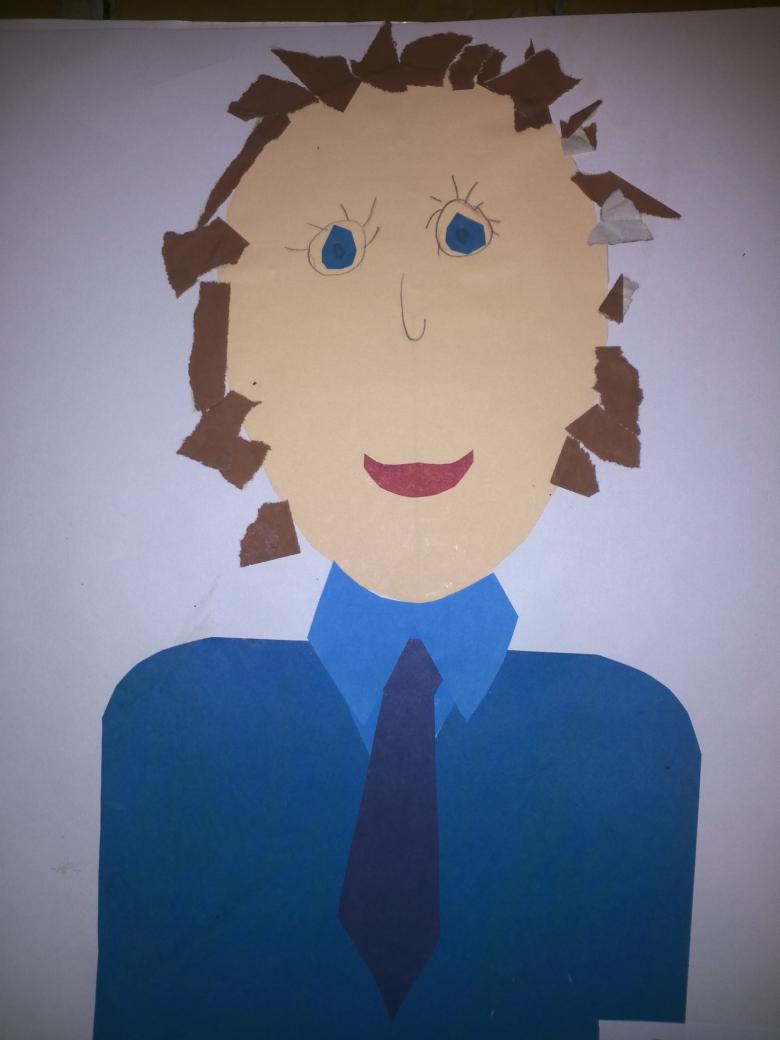
Getting to know the location of the senses
Familiarity with the location and purpose of the senses is necessary for children aged 2-3 years. During this period, work is performed with the help of an adult.
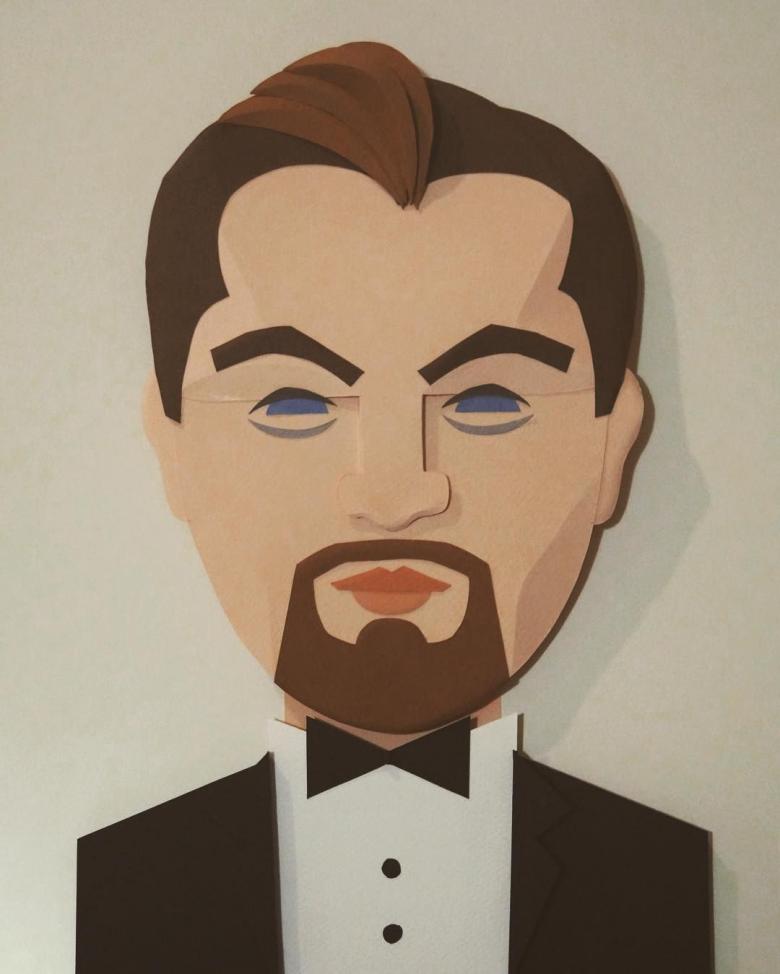
For the application you will need:
- face template;
- templates of mouth, eyes, nose, ears;
- glue.
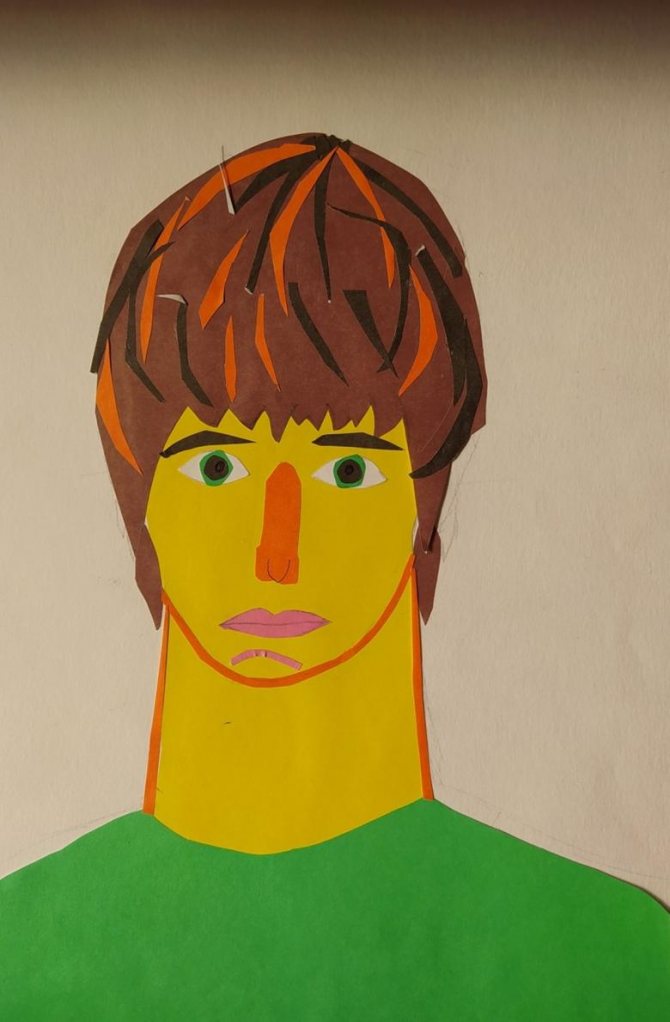
To begin with, the child is shown a template of a face and told that the sense organs are located on it. They show the organs one by one, explain their purpose and location, and let you look at them. The child applies glue to the template and sticks it to the face. The actions are repeated with each sense organ.
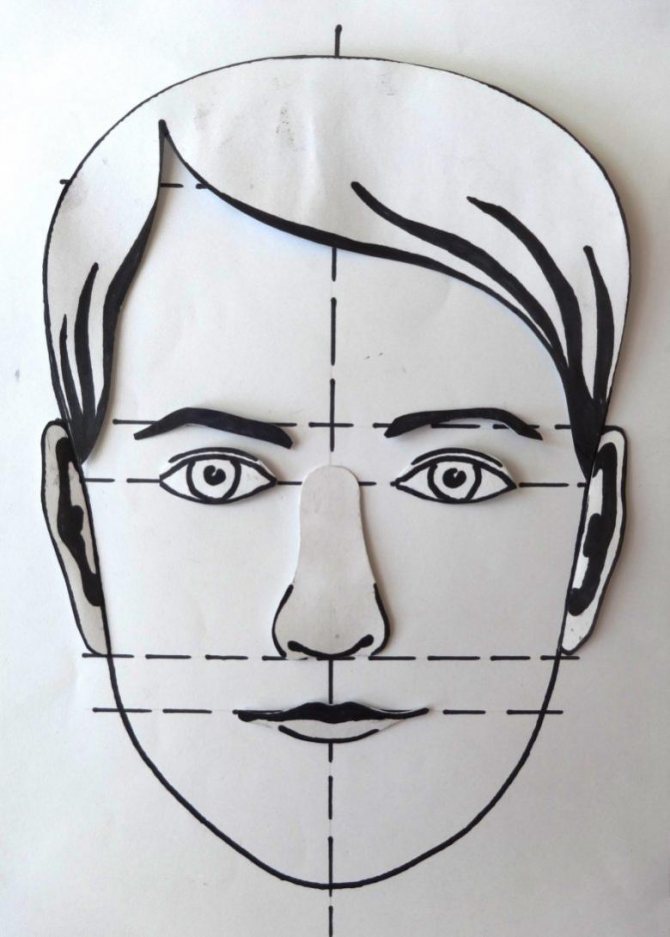
Getting to Know Emotions
The application of a person's emotional face will be of interest to children aged 4-5 years. To work, you will need to prepare in advance templates of the eyes and mouth, expressing various emotions - anger, joy, sadness. Also, for the applique you will need a person's face made of paper. It may have a nose drawn on it in advance.
- Work begins with one emotion. It is described in detail. They tell how this feeling is expressed through the eyes and mouth.
- They invite the child to choose from a general set of templates that are suitable in meaning and place them on his face. If it turned out correctly, move on to the next emotion.
- If a child has made a mistake, then it must be discussed and helped to correct it.
Playing with emotions is interesting not only in the form of applique, but also with magnetic templates or Velcro parts.

Human face applique for children
If in a kindergarten or primary school a teacher uses a synopsis to conduct creative activities, then at home you can use the child’s basic knowledge. When exploring the human body and mastering basic geometric shapes with children, it is best to get creative and practice drawing faces:
- the child independently makes several pictures using the appliqué technique, gluing the blanks onto the face;
- the next step is to glue the ears and lips; for comparison, you can use several stencils at the same time.
- the position of the eyes remains a reference point for the child, so he masters the concept of symmetry and the correct arrangement of body parts;
- parents prepare in advance blanks of the face, individual sense organs (nose and ears, eyes and lips);
- observing the proportions of his own body, the child fixes his nose on the applique, which is located in the center of the craft, eyebrows above the eyes;
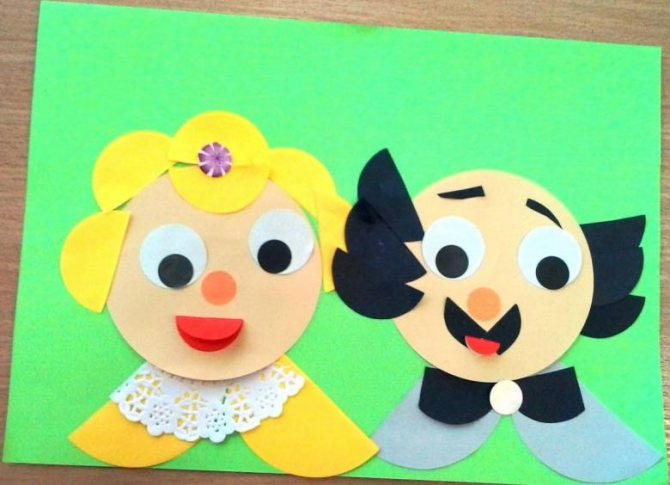
To give the finished craft a voluminous look, strands are used; it is easy to make hair from them and form a hairstyle. By grouping different parts of the body, the child learns to determine the mood of other people, creating faces with different emotions, for which face models can be used.
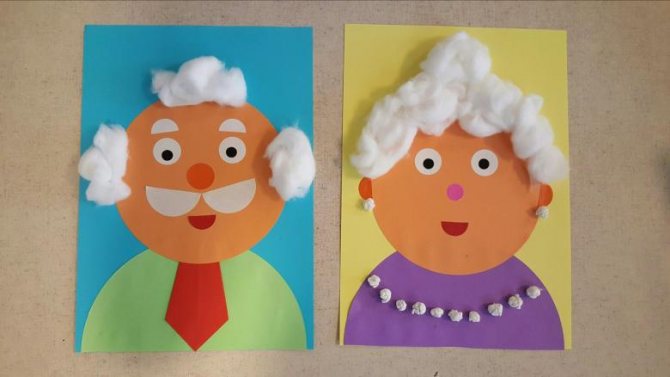
Man in motion
The appliqué of a person in motion helps develop a child’s creative abilities and imaginative perception. The difficulty of this task is that rectangles and squares of different sizes are used for the work.
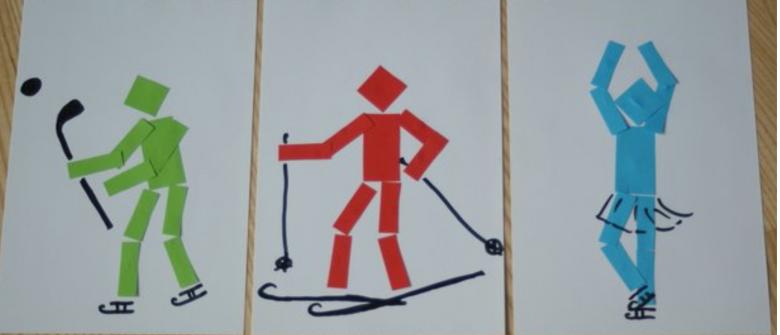
For the application you will need:
- blanks of squares and rectangles made of paper;
- cardboard;
- glue.
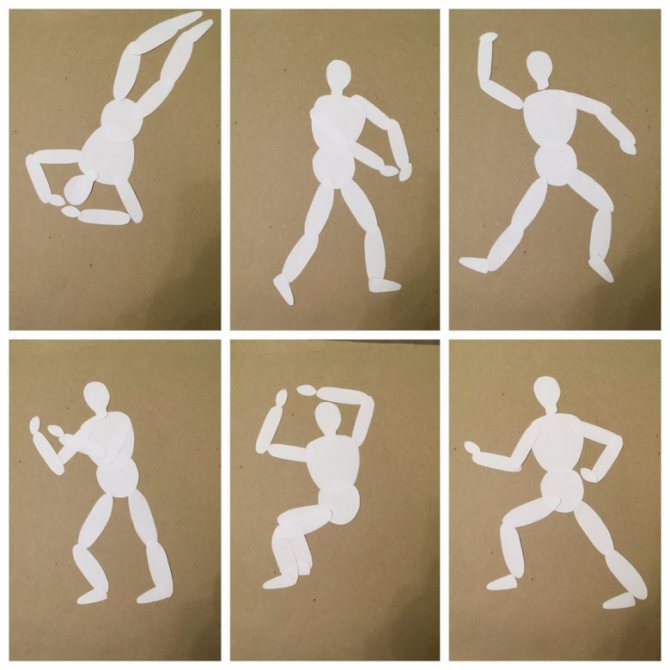
The work consists of several stages:
- The child is asked to choose cardboard - the base on which he will stick the figure.
- The adult pronounces the pose that will be depicted in the form of an appliqué. He explains how the arms and legs are positioned in this pose, and what features there are. For example: a person runs, bends over, jumps.
- The child takes the prepared templates and lays them out in the desired position on the cardboard. If you have completed the figure correctly, then glue the rectangles with glue.
- If mistakes are made in a pose, the adult tells you how to correct it.
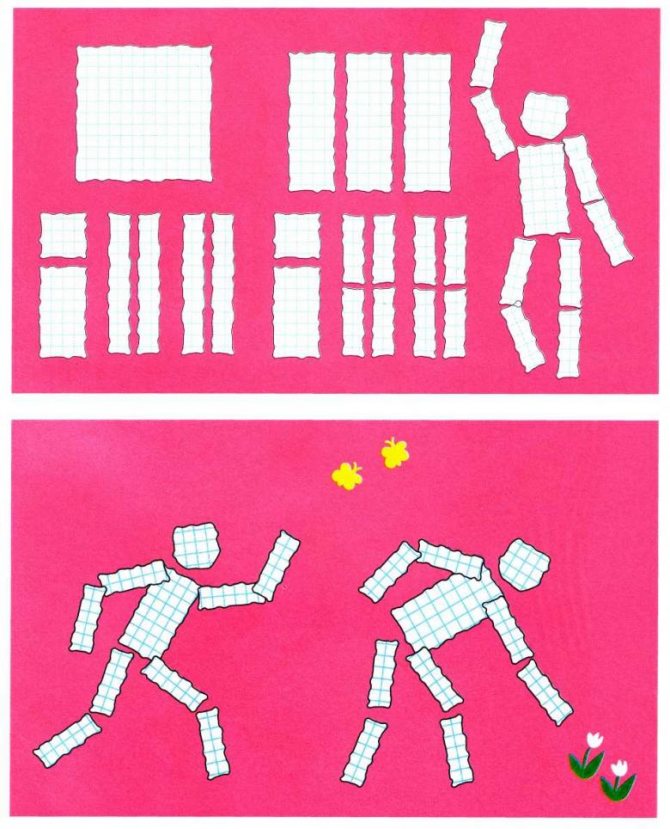
The application of a person in motion will be useful for children of primary school age and art students.
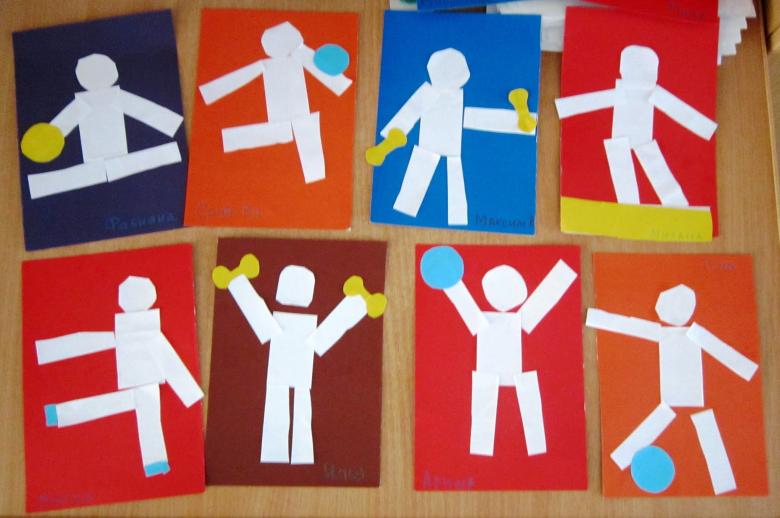
Applications for advanced
All creative tasks develop imagination in children and adults, a craving for handicrafts and art. When we learn to make appliqués with our own hands, then, as with any task, we can approach the matter precisely and strictly “as per the manual,” or we can add elements of play and even mischief.
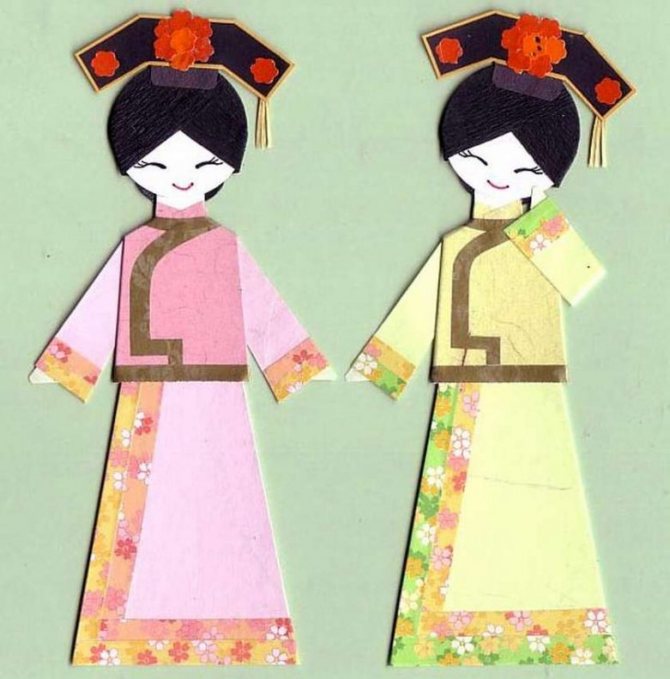
To further involve your child in the process, use other, non-standard materials in addition to paper:
- Thick knitting threads that can be woven into braids are well suited for hair;
- For hairstyles and beards - cotton wool;
- To depict clothes, you can mix different materials: paper and fabric, glitter, paper curls;
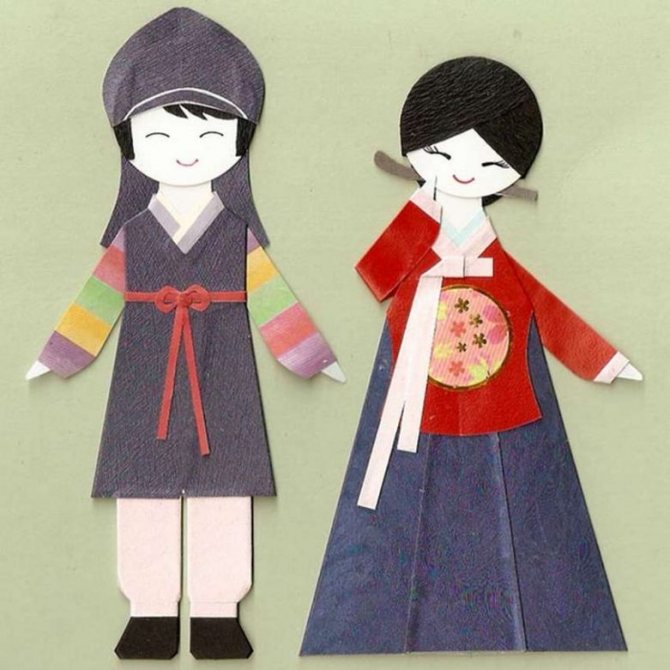
If you have mastered paper applique, you can safely move on to other types: appliques made from beads, from seeds, from autumn natural materials.
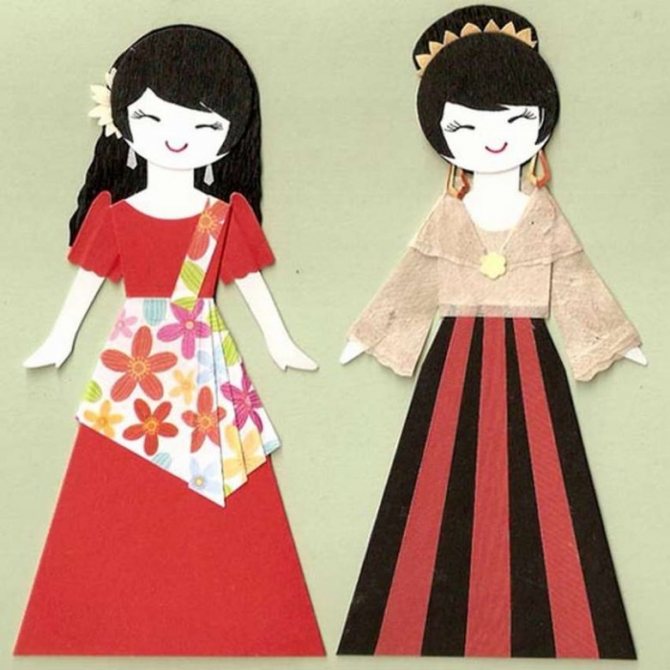
The main thing is that children and adults enjoy this process.
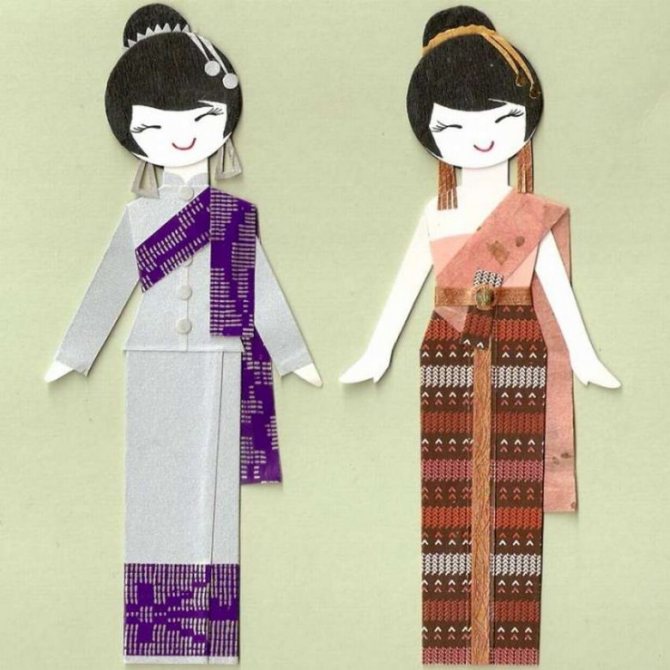
Studying anatomy
Older children will be interested in studying human anatomy using the applique as an example. This game will not only develop fine motor skills and perseverance, but will also introduce children to the structure of internal organs.
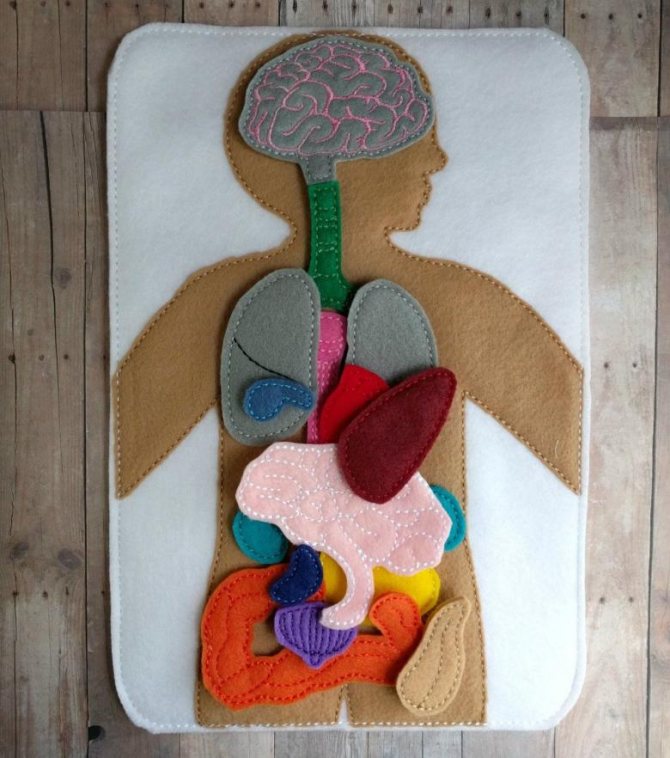
Depending on age and level of training, the number of organs may vary. To play you will need:
- template (contours of the human body);
- organs (brain, stomach, lungs, liver, heart, intestines and others);
- diagram with the location of organs on the template and their names;
- glue.
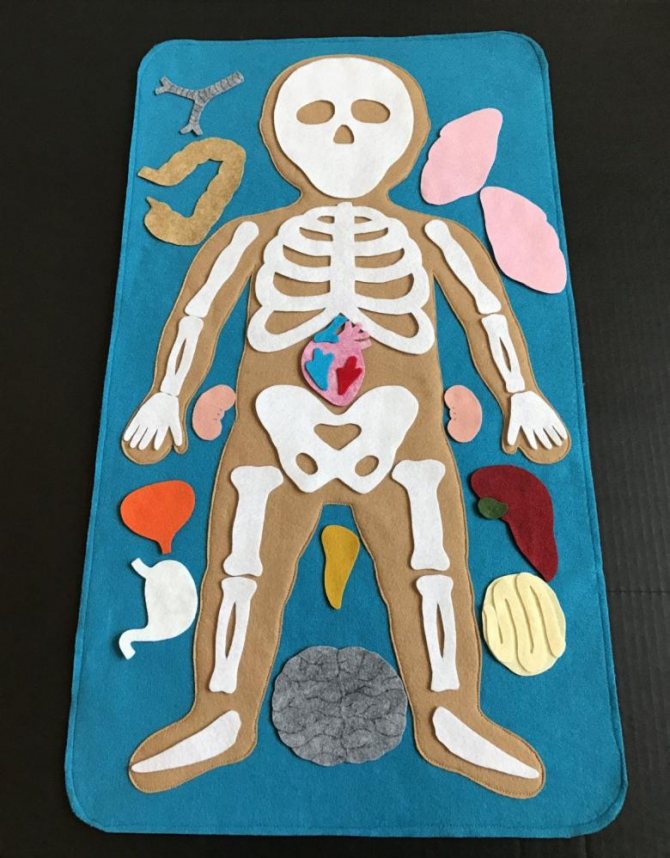
The essence of the game is to introduce the child to internal organs.
- Each organ is taken in turn. Its name is clearly pronounced and shown on the diagram where it should be located. For older children, the purpose of this organ is explained.
- The child takes the organ shown and glues it onto the person’s stencil for appliqué.
- The actions are repeated with each organ.
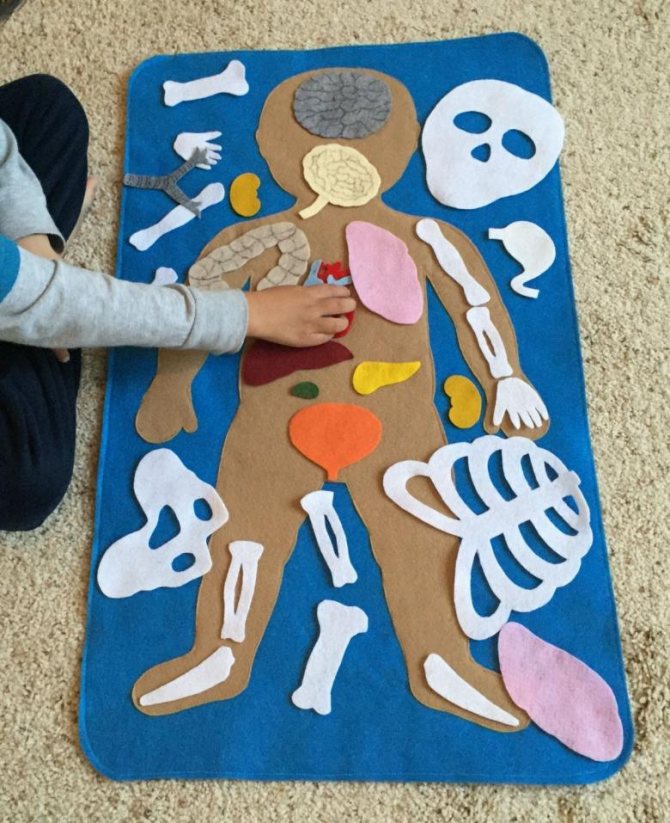
If this is not the first time an acquaintance with the internal structure of a person occurs, then the child can be asked to independently glue the organs onto the template.
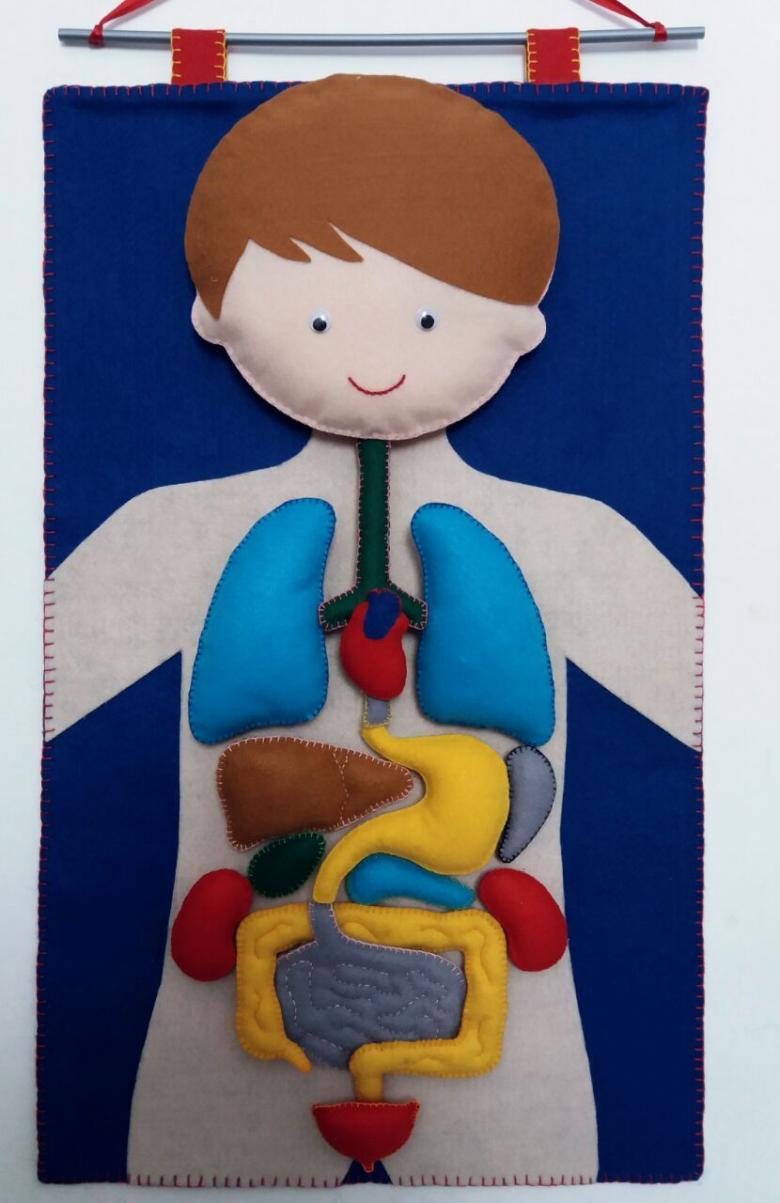
Studying human anatomy using application
Older children can also use appliques to learn body anatomy. The older the child, the more elements of internal organs will be needed. To begin with, it is enough to use blanks to illustrate the brain, lungs, heart, stomach, liver and kidneys.

The more organs the child knows, the more new elements can be added, for example, adding intestines, spleen, etc. to the application.
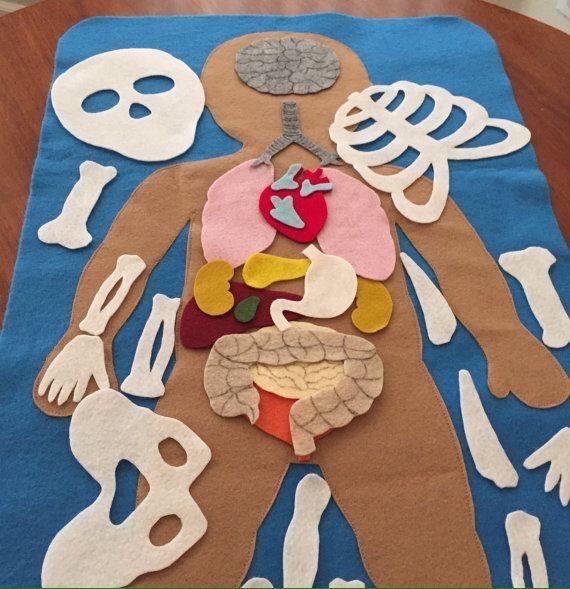
Since studying anatomy is a lengthy process, appliqué elements are usually made of durable multi-colored materials, such as felt or colored cardboard.
Organ templates can be taken from human anatomy atlases.
Movable little man
Patterns of human body parts can make applique more interesting for children. With their help, it is possible to achieve a realistic, bright picture or give it dynamics. Surely older children will enjoy the dynamic applique.
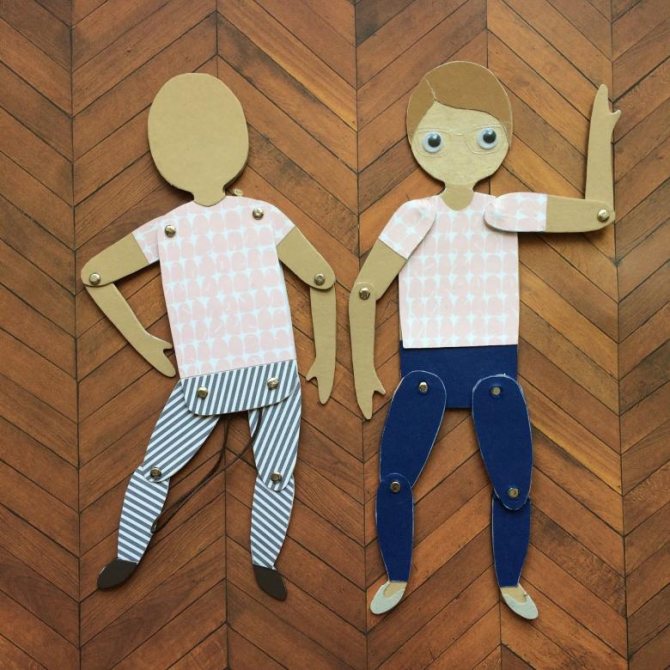
To work you will need:
- templates of body parts (arms, legs, torso, head);
- screws and nuts from a metal constructor;
- cardboard;
- glue;
- scissors.
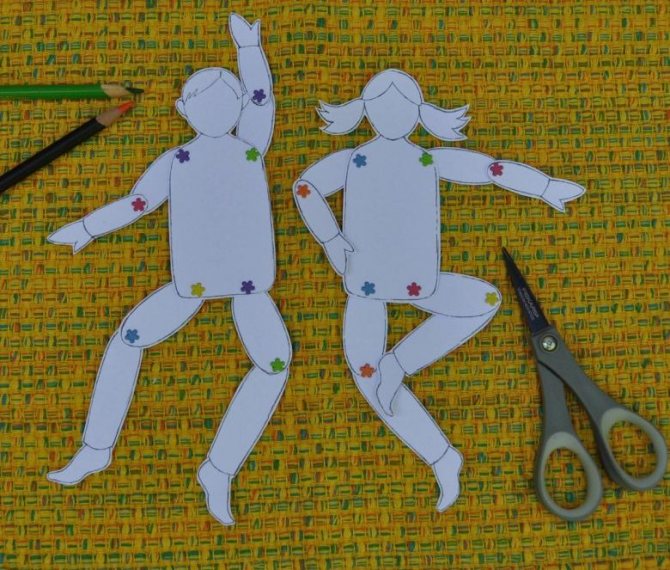
The work is carried out in several stages:
- Templates printed on paper are cut out and glued onto thick cardboard. This makes them stronger. Then the parts are cut out of cardboard.
- Place your hands on the body and use sharp scissors to make a through hole. A screw is inserted into it and a nut is tightened. I repeat the operation with my legs.
- The head is attached to the body in a similar way.
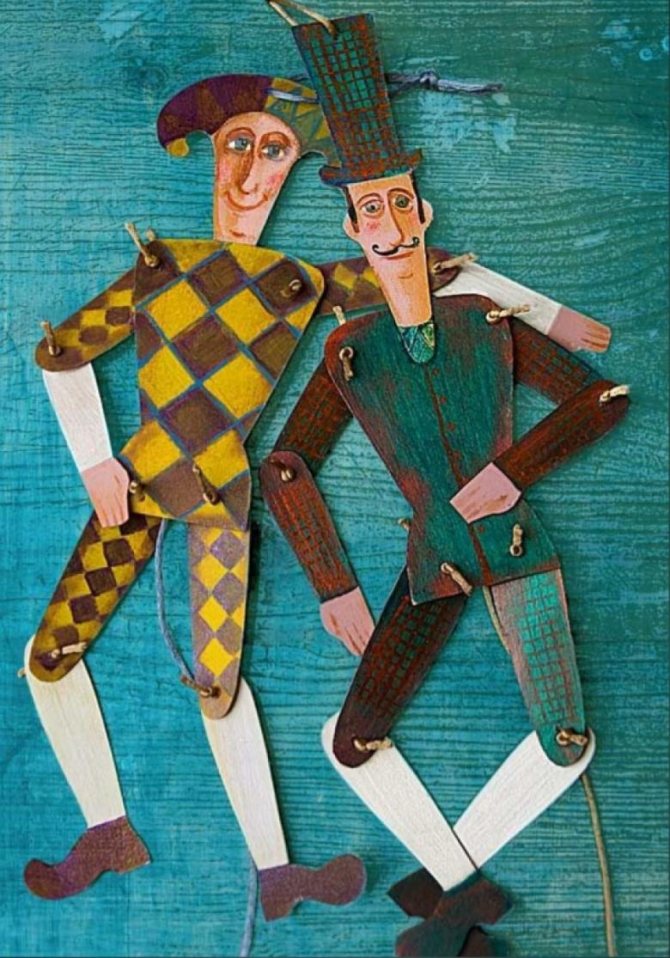
The little man gains mobility and is ready to play. To complicate the work, you can create additional connections at the elbows and knees.
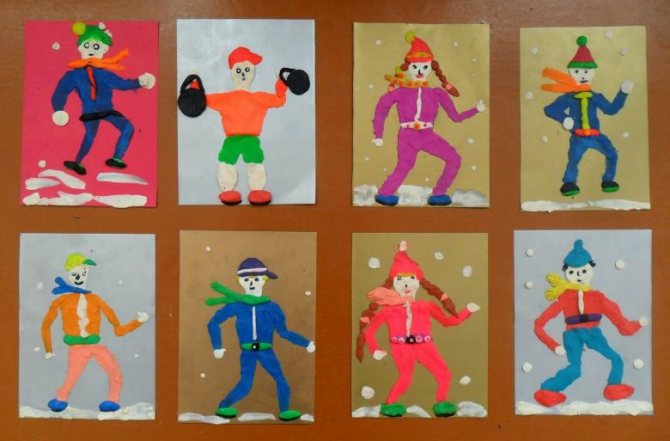
Applications are a fascinating creativity that develops imaginative thinking, perseverance, and fine motor skills. Working with paper is suitable for children of all ages. Having mastered the skills of appliqué on paper, you can move on to more interesting and complex activities - for example, creating a reusable game with felt Velcro.

